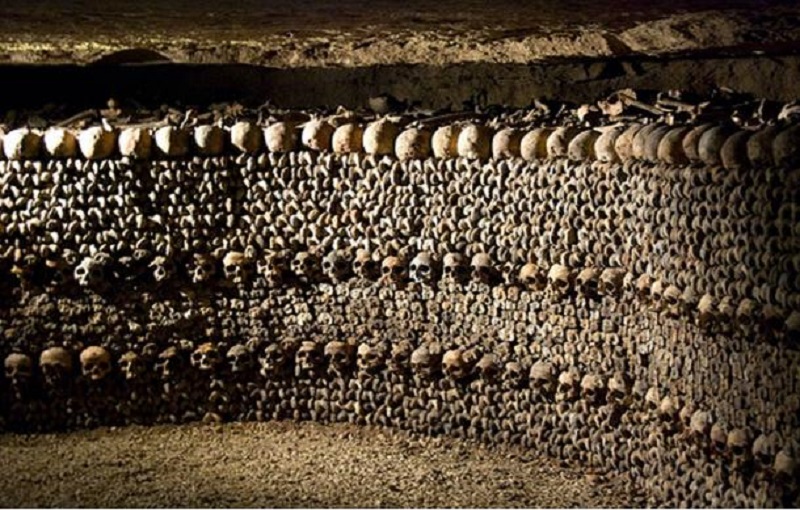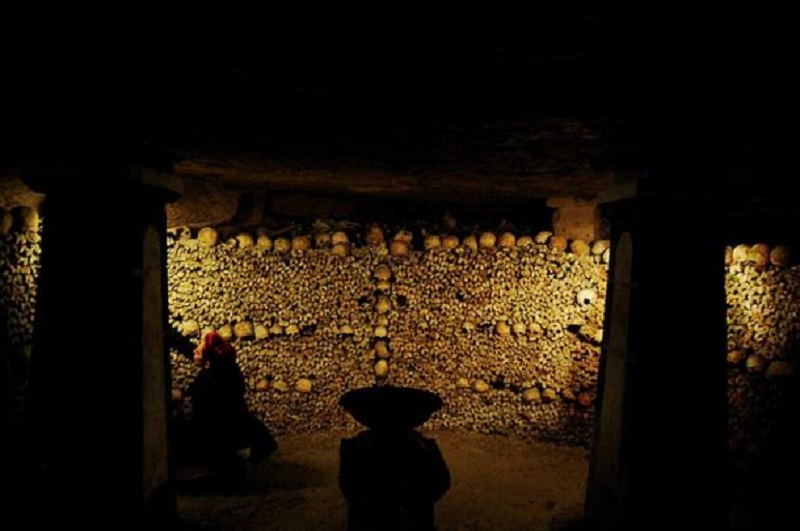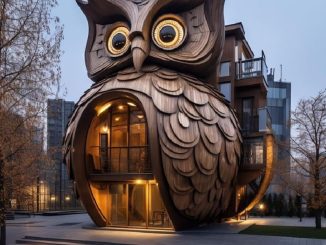Paris, the capital of France, is often called La Ville Lumière (meaning ‘The City of Light’), however, underneath this bustling European city of 12 million people, lies a dark underworld contains the remains of 6 million former inhabitants. . This is the Paris Catacombs: a network of caves, quarries and old tunnels that stretch for hundreds of miles and appear to be lined with the bones of the dead.
Some areas are open to the public as museums, but since 1955 entry to most underground spaces is prohibited. However, this does not stop some thrill-seekers from venturing into the cave-filled passages, which contain thousands upon thousands of skeletons of the dead. As the water table under the city rises, many of these spaces are now filled with cool, clean water. Locals are well aware of this, and according to Bobrtimes, this year’s long, sweltering summer has seen an increase in illegal intrusions into catacombs as people seek to avoid the heat by Use underground pools as cooling areas.
But these desperate measures could have dire consequences. Just last month, two teenagers were rescued from the catacombs after being lost in the vast network for three days. They were found by rescue dogs and taken to the hospital to be treated for hypothermia, The Guardian reported. It is not known exactly how the boys got lost, but this incident, along with a recent emergency cave rescue in Thailand, suggests how easily the boys could have become lost or trapped. What is it like to get lost in such environments?
The historic underground catacombs are the final resting place of millions of Parisians. SBoyd/Flickr
Origin of the Paris Catacombs
The Paris Catacombs originated from limestone quarries located on the outskirts of the city. This natural resource has been used since Roman times and provided construction materials for the city’s buildings and contributed to its growth and expansion. However, it was only after the second half of the 18th century that the former limestone quarries (now part of the city as it expanded over the centuries) were converted into burial grounds.
By the 18th century, Parisian cemeteries such as Les Innocents (the largest cemetery in Paris) had become overcrowded, leading to improper burials, open graves, and exhumed corpses. Naturally, people living near such places began to complain about the strong stench of decomposing flesh and the spread of disease from the cemeteries.
In 1763, Louis XV issued a decree banning all burials in the capital. However, the Church did not want to disturb or move the cemeteries and opposed the decree. As a result, nothing gets done. This situation lasted until 1780, when an unusually long spring rain caused the wall around Les Innocents to collapse, leading to rotting corpses spilling over onto neighboring grounds. At this point, the French government was forced to act.
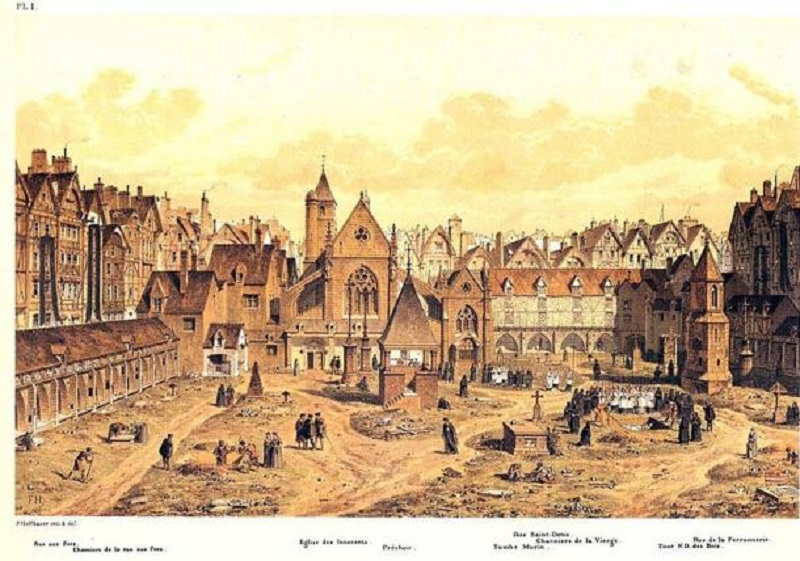
Engraving depicting the cemetery of the Holy Innocents in Paris, circa 1550. Public domain
In 1786, the former Tombe-Issoire quarries were blessed and consecrated, transforming them into the Paris Catacombs. It took two years for all of Les Innocents’ bones to be transferred to the crypt. In the following decades, the bones of the dead were removed from cemeteries around Paris to be reburied in catacombs. Furthermore, the custom of burying the newly dead directly in the crypt began after the French Revolution.
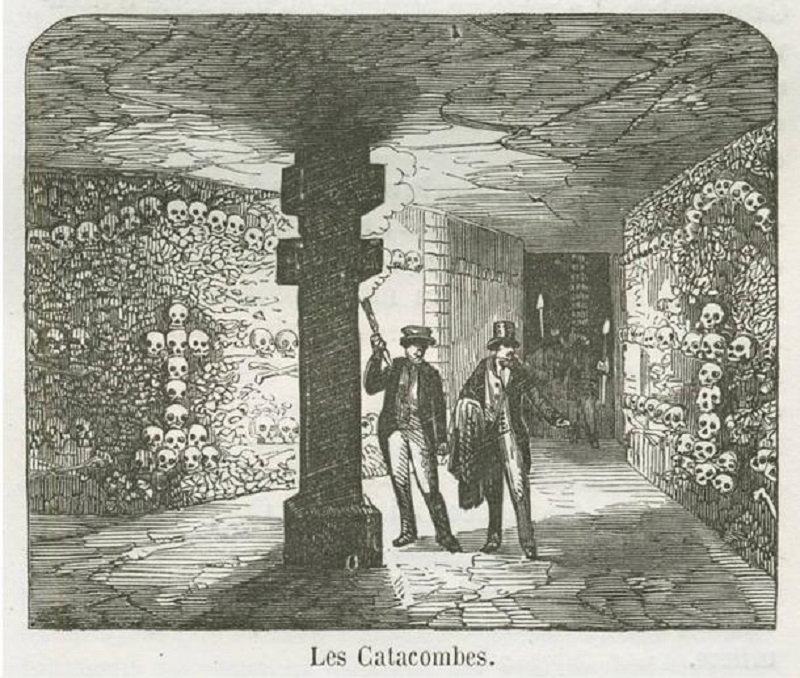
Bones from the old Magdeleine cemetery. Deposited in 1844 at the western ossuary (bone depository) and transferred to the crypt in September 1859. Wikimedia Commons
The strange underworld of the catacombs
Although the Paris Catacombs are still open to the public today, access is limited to only a small portion of the network. Since 1955, it has been illegal to enter other parts of the catacombs.
However, in the 1970s and 1980s, the catacombs were illegally explored by Parisian urban explorers known as Cataphiles. Some spaces have even been restored and turned into creative spaces. For example, one of these underground caves has been turned into a secret amphitheater, complete with a giant movie screen, projection equipment, a few movies, and seats. The adjacent area has been renovated into a well-stocked bar and restaurant, presumably where patrons of the amphitheater can enjoy a snack or meal.
It is estimated that up to 300 Cataphiles enter the catacombs each week through the secret entrance. However, non-Cataphiles and tourists are generally not welcome.
From its beginnings as a limestone quarry to its use for burying the dead in the 18th century and its role today in the lives of Cataphiles, the Paris Catacombs have been an important feature of the city.
Although systematic exploration of underground tunnels could shed light on the extent of the catacombs, it would likely not meet the consensus of all parties. After all, the secrecy of the network of catacombs and the chance to escape the hustle and bustle of the city above are attractive concepts to Cataphiles, and they probably won’t give up their obsession. yourself so easily.
The living and the dead both live in the Paris Catacombs. Jay Springett/Flickr
